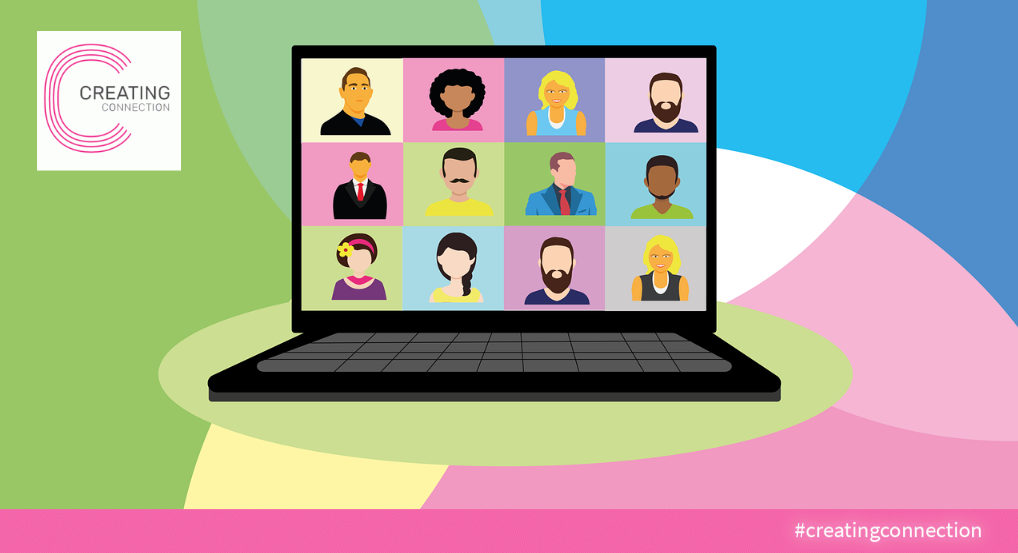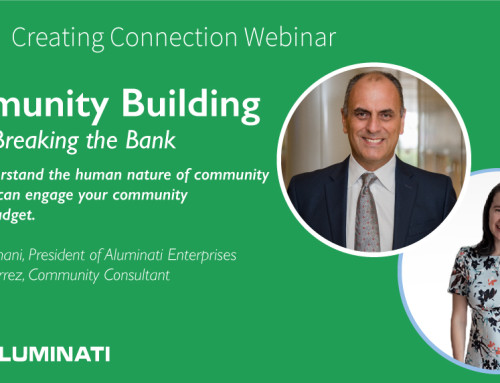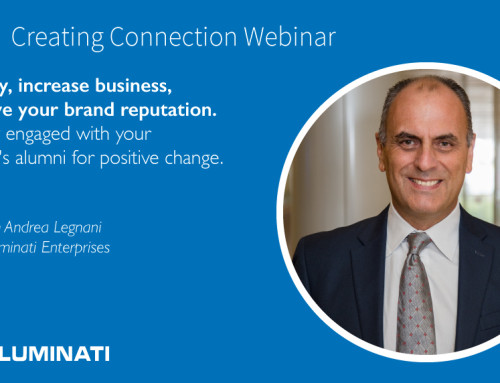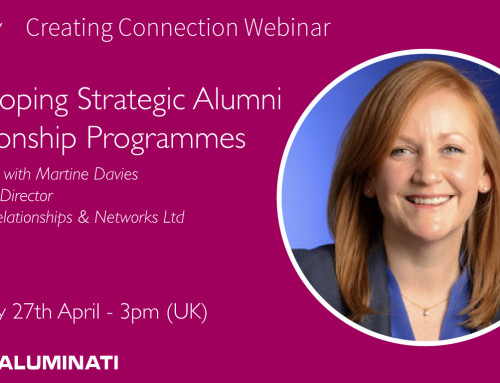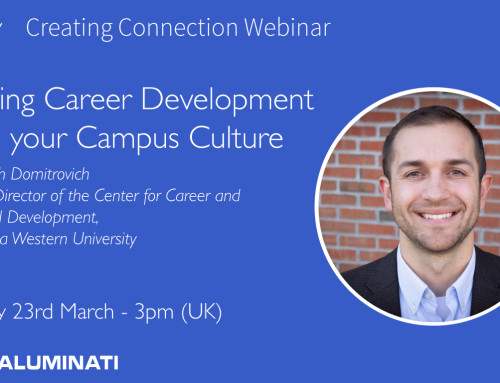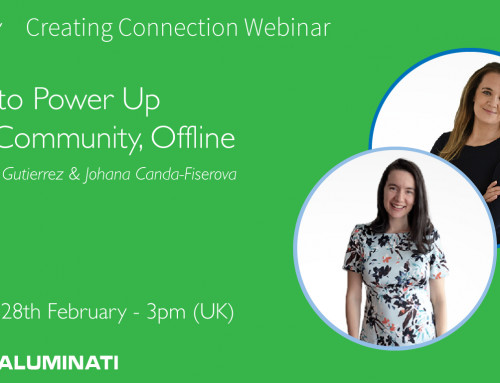Our sixth Creating Connections Virtual Round Table took place on Tuesday, 21st of July 2020. Mac Reddin, CEO of Commsor, led the session. Our team met Mac through the company’s Comm Chat Summit 2020 in June. Over 1,400 community builders signed up to take part over two days. To find out how, Commsor got such an impressive turnout, we invited Mac to share what he learned about organising, promoting, and running a successful, largescale, online event.
Creating Connection events are for members of the Community Builders network. If your work involves building community, managing networks, or strengthening affinity, it is free for you to join.
Sign up for your Community Builder’s membership.
Overview of the Event
The purpose of the Comm Chat Summit was to grow Commsor’s community and create quality content. Finding ways to keep a large audience engaged for a two-day, virtual event is challenging because it is easier to shut down your computer than to walk out of a convention centre. For this reason, they did not want the event to be a repetitive string of webinars, instead they developed a series of interactive experiences for a diverse group of community builders. Mac’s aim was to gather over a thousand participants. Although platforms like Zoom are popular virtual conferencing applications, they are not always ideal for events of this scale. Alternatively, Mac decided to use Hopin – a new, multi-functional platform with virtual conferencing, breakout rooms, virtual exhibitor stands and one-to-one networking.
Planning a Large, Virtual Event
Mac launched the event in March 2020, aiming to sign up 200 attendees in the first two weeks. Unfortunately, two weeks passed and only 55 attendees signed up. Persevering, Mac continued to promote and develop the event, adding a full set of speakers and programmes, and found that two weeks before the event date attendee numbers shot up to over 1,400, with 400 of these signing up during the event.
Through this, Mac realised three things:
- People are reluctant to sign up for an event without context; planning and sharing that plan is vital if you want them to invest their time with you.
- People do not sign up for virtual conferences far in advance. Unlike in-person events, you do not need time to plan your travel, hotel stay, or book time off work.
- Expect a last-minute rush.
9 Reasons Why This Event Was Successful
- They kept it simple
Mac chose not to run multiple sessions at the same time so that attendees were not overwhelmed by choice. The sessions were also varied to keep people engaged, alternating between speakers, panel discussions, group sessions and networking. Mac described this approach as, “one thing, one session, one option”. - They prepared speakers
The sessions were not talking-head style webinars. Consequently, much time went into working with the speakers to develop interactive content. Every speaker received an in-depth speaker guide to help maintain consistency in style and delivery. Everything was live; nothing was pre-recorded, allowing attendees to ask questions and join in with discussions. - They thoroughly tested their event system
Virtual events come with quirks and technical glitches. Hopin was new to many speakers, so training them and testing the flow of the event was instrumental in the (mostly) smooth delivery across both days. - They avoided a resource-heavy approach
The Comm Chat Summit was organised and managed by a team of three and it cost around $3,000, which is relatively inexpensive for an event of this scale. Running a live conference of this size could cost upwards of $30,000 and require months of intensive planning. Consequently, this type of event could be a cost-effective way for organisations to build their networks, generate leads and improve brand awareness. - They planned for the worst and hope for the best
Most of the sessions went to plan; most started on time and there were limited technical issues until the final scheduled talk. Thunderstorms left two of the biggest names on their speaker list unable to connect. Ironically, their session, entitled: Learning from Community Failure, was the only one that failed. With hindsight, Mac would have planned back-up sessions and speakers, because sometimes things go wrong. They managed to replace the final session with a community discussion, and were lucky that none of the other speakers ran into similar problems. - They were proactive in creating engagement
During each talk, one of the organisers spent time interacting with other attendees in the chat box. This thoughtful touch actively engaged the attendees. One speaker commented on how valuable it was seeing the conversations in the chat as it helped them understand what interested their audience most. - They kept sessions short and sweet
Each session lasted for half an hour allowing 10 – 15 minutes of talking followed by questions and answers. This rapid format meant that attendees stayed interested and it further enforced the interactive nature of the sessions. - They used networking sessions to buy time
Setting time limits is great in theory, although in practice, speakers do run over. Therefore, the Commsor team included two networking sessions; one mid-morning and the other mid-afternoon, so if they ran over by twenty minutes, they had time to reset. - They varied the type and structure of the content
94% of the 1,400 people who registered for the event, showed up for at least an hour over the two days. Mac believes that the impressive statistic is due to the structured content. They were mindful of diversifying the content delivery from one session to the next. They alternated between single presenters, podcasts (recorded live), panel discussions, interviews and they even had a dance party. By varying the content, they kept drop-out rates low and engagement high.
Measuring Success
The purpose of the event was to build the Comm Chat community. Comm Chat had 400 members before the event and afterwards, this number surpassed 1,100 with newsletter subscribers increasing by 3,000! They also generated thirteen and a half hours of content, which continues to generate organic interest and leads through YouTube. Additionally, the event improved Mac’s profile and credibility within the community building space leading to over 200 of the 1,400 attendees requesting demonstrations of the Commsor product. Clearly, the event was highly successful for Mac and his team!
Insights from the roundtable attendees’ discussion
One institution experienced a five-fold increase in their average attendance for online events compared to similar in-person events. Likewise, another attendee said that they expected roughly 40 people to come to their in-person events, but they had 500 people sign up for their mass engagement webinars with a 50% attendance rate. However, as time moves on, they are discovering that the audience is less captive now than they were three months ago. As a result they are looking at strategies to improve engagement and determine how that will feed into Ross-CASE bench-marking.
Mac sustained interest with a captive audience for fourteen hours over two days through the interactive sessions as opposed to a single webinar-style event, which was something that none of the other attendees have tried, although one institution did host an online webinar-style event with 3,000 participants. Despite having a larger audience, the interactivity was limited. Additionally, the volume of comments and questions was so intense that interacting with people in a meaningful way during the webinar was challenging. However, the purpose of that event was not about growing their following, instead, they used the event for fundraising by looking at the interactions between alumni and the speakers and what questions they asked during the course of the webinar. Afterwards, they followed up with each of them to continue the conversation and they discovered that this worked well. It also helped that institution to find a place in the digital world, which is something that they were not actively doing before. When asked about the platform they used to host such a large-scale online event, they said that they did not use a platform. Instead, it was mixed by a production crew like a live TV show. They invested in a production team to film the event and a team of five who mixed the footage. Although this was costly, the result was high-quality content that was worth the investment.
Online events have no geographic boundaries making this an ideal opportunity for international engagement. Mac said that people from ninety different countries attended the Comm Chat Summit, which is a challenging statistic to replicate with in-person events. Thus, an innovative idea emerged for an organisation to host a consecutive series of events in the form of a digital world tour to reach people in different time zones. A representative from another institution mentioned that virtual gatherings have allowed them to be more inclusive because their alumni community is spread all over the world, and attendance at in-person events is not always possible. One attendee mentioned that they now have people attending their webinars who have never engaged with them before. Other attendees agreed that they saw a significant increase in the number of people from different countries attending their online events in a way that they have not experienced with in-person events.
Having so much data at your fingertips is helpful because you can measure regular attendees, new attendees, drop-off rates, average viewing time, and attendance rates for each topic, leading to greater insight into what their communities respond to. One of those insights was that interest in COVID-19 is declining, which means that the subject matter for online events can be more varied and less focused on the effects of the pandemic and lock down.
A round table attendee raised a question about attendance rates and what constitutes a good turnout for virtual events because this was a new area for them. Typically, they expected a 40% attendance rate for their free, in-person events but were unsure of what they could expect from a virtual event. Mac said that from his research and through talking to different people, large online events with a 50%-60% attendance rate are good, and with smaller events, 25% is a good turnout because it is so easy to sign up and be non-committal. So, if 100 people sign up and 25 people attend, you have done well. Thus, the 94% turnout for the Comm Chat Summit was even more impressive, and likely the result of the interactive nature of the sessions.
One attendee shared that they cannot use Zoom as it is prohibited, and the platform they can use is limited to only 100 participants, which is not ideal. They are currently looking for other solutions that allow them to attract a wider audience. As they recently completed a round of fundraising for the university medical centre, raising almost a million dollars from 6,000 donors, they want to invite them all to a live event with the dean of the medical school and the professors. However, that will not be possible using their current system; the group then shared some suggestions of platforms that they have used. Some of the platforms they mentioned are listed below:
Join us for our next Creating Connection roundtable on the 9th September 2020 at 3pm – 4pm UK time. Creating Connections #7: How Community Engagement is the Next Marketing Revolution
Sign up here and be sure to join the Community Builders mailing list to be notified of future events
